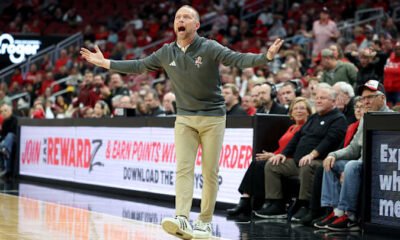Blog
Nick Saban, the legend of Alabama, names the greatest head coach of all time.
Nick Saban’s proclamation reverberated through the halls of college football history: when asked whom he considers the greatest head coach of all time, he didn’t point to himself, nor to modern NFL masterminds like Bill Belichick or legends such as Vince Lombardi. Instead, with characteristic humility and reverence for tradition, Saban declared, “I think that coach [Paul ‘Bear’] Bryant is the greatest coach of all time.”
From the worn leather of his sideline playbooks to the spotless white of his pregame hat, Nick Saban has crafted a legacy that few can match. Born October 31, 1951, in Fairmont, West Virginia, Saban rose through the coaching ranks—from graduate assistant at Kent State to defensive coordinator in the NFL, and eventually to the pinnacle of college football at LSU and then Alabama. Under his guidance, programs transformed overnight: LSU claimed the 2003 national title, and since 2007, Alabama has hoisted seven national championships (2003, 2009, 2011, 2012, 2015, 2017, 2020), more than any coach in the modern era. His teams’ ferocity on the field, meticulous attention to “the process,” and unyielding standards established a dynasty unrivaled in college football .
Yet, in recognizing his own accomplishments, Saban chose not to elevate himself above those who paved the way. His nod to his predecessor, Paul “Bear” Bryant, bridged two of the sport’s most storied eras in Tuscaloosa. Bryant, head coach at Alabama from 1958 to 1982, amassed six national championships and thirteen conference crowns during a 25-year tenure. Upon his retirement in 1982, Bryant held the record for the most wins (323) in collegiate football history—a mark emblematic of both longevity and excellence .
Bear Bryant’s influence extended far beyond the numbers. He navigated the tumultuous waters of integration in the Deep South, famously recruiting college football’s first African American scholarship player at Alabama, Wilbur Jackson, in 1970. Bryant also revolutionized the game tactically: in 1971, he abandoned the pro-style offense for the newly devised wishbone formation, a switch that propelled Alabama to back-to-back national title contenders and cemented his status as an innovator . His trademark houndstooth hat became a symbol of steadfast leadership, and his sideline presence—a rolled-up game plan in hand—epitomized the blend of old-school grit and strategic acumen that defined his era.
Saban’s decision to name Bryant as the best ever came during an interview for the forthcoming documentary “Nothing but a Winner,” which chronicles Alabama’s dynastic rise. The film, slated to debut this summer, dives into the highs and lows of building a perennial power in college football, from recruiting battles and bowl game triumphs to the personal sacrifices demanded by greatness. When asked about the figure who most embodies the spirit of head coaching, Saban paused only briefly before answering, his voice reflecting both respect and a touch of awe: “I think that coach Bear Bryant is the greatest coach of all time” .
For Alabama fans, the exchange was more than a soundbite—it was a passing of the torch. Bryant’s supporters, some still remembering the roar of Denny Stadium in the 1960s and ’70s, felt vindicated that Saban, arguably the most successful coach since Bryant’s retirement, paid homage to the very man whose footsteps he followed. Social media buzzed with tributes, from Instagram posts by Touchdown Alabama Magazine highlighting Saban’s words to Facebook groups echoing the sentiment that Bryant’s standards set the foundation upon which Saban built. One fan wrote, “Seeing Saban honor Bryant feels like watching history come full circle in Tuscaloosa” .
The continuity between their philosophies is clear. Both coaches emphasized discipline over talent alone, believing that a cohesive “team-first” mentality could overcome individual star power. Bryant’s legendary “Junction Boys” camp in 1954 exemplified toughness and accountability; Saban’s early-season “whiteboard sessions” at Alabama reasserted the primacy of fundamentals and team unity. While Bryant’s era lacked the modern trappings of analytics and social media, his methods laid the groundwork for Saban’s meticulously scripted game plans and data-driven recruiting model. As one sports historian noted, “Saban stands on Bryant’s shoulders, just as Bryant stood on the pioneers before him” .
Despite shifting landscapes—scholarship limits, transfer portals, and playoff expansions—Saban has often referenced the “process” he learned from Bryant. In press conferences, he speaks of “embracing the Alabama way,” a phrase that resonates in the echoes of Bryant’s pregame speeches and postgame reflections. This shared ethos underscores why Saban’s acknowledgment is more than nostalgia: it’s a testament to the enduring values that make a coach great—integrity, adaptability, and an unwavering commitment to excellence. When Saban places Bryant atop the pantheon, he reaffirms those principles for future generations.
The documentary’s producers captured a poignant moment: Saban flipping through vintage game footage of Bryant’s 1965 Orange Bowl upset over Nebraska—an instant when Alabama claimed the 1964 national title on New Year’s Day. The roar of the crowd, the shadow of Bryant’s silhouette against the goal posts, and Saban’s voiceover melding eras. It’s a powerful visual metaphor for stewardship of a legacy. As one Alabama alum remarked, “Seeing Saban watch that film is like a living link across time—two coaches united by a shared mission to define greatness” .
In the ever-evolving realm of college football, where coaches rise and fall amidst the fickle winds of recruiting cycles and conference realignment, Saban’s deference to Bryant reminds us that the measure of a coach transcends wins and losses. It’s found in the culture forged in locker rooms, the resilience instilled in athletes, and the moral compass that points toward integrity. When Nick Saban names Paul “Bear” Bryant as the greatest head coach of all time, he does more than crown a legend—he cements a lineage of leadership that will guide the Crimson Tide for generations to come.
Nick Saban’s praise for Bear Bryant did more than stir pride in Alabama’s faithful—it sparked a national conversation about the very nature of greatness in coaching. What truly makes a head coach the “greatest”? Is it championships, cultural impact, innovation, or leadership under pressure? Through the lens of both Bryant and Saban, we begin to understand that it’s not any single quality, but a fusion of legacy, consistency, and transformative influence.
More Than Wins: The Soul of a Program
When Saban called Bear Bryant the greatest of all time, he wasn’t simply deferring out of humility or Southern respect for one’s elders. He was pointing to a deeper truth. Bryant didn’t just win; he defined what winning meant. He didn’t just run a team; he created a culture that was bigger than himself—a culture that made Alabama a household name not just in football, but in American sports history.
Bryant built his teams on toughness. His legendary “Junction Boys” camp—held in the grueling heat of Junction, Texas, during his brief stint at Texas A&M—pushed players beyond their limits. While controversial today, the camp became the crucible in which Bryant’s coaching philosophy was forged: mental resilience, emotional discipline, and a brutal kind of camaraderie that transcended the field.
Saban, decades later, cultivated similar values through a far more modern and structured approach. His “Process” is now part of football vernacular. Where Bryant demanded grueling physical tests, Saban imposes an unrelenting mental standard. “Do your job,” he often says, echoing a mantra that demands presence, accountability, and detail.
“Bear Bryant built a program out of steel and pride,” one Alabama historian wrote. “Nick Saban modernized it into a machine that never stops refining itself.”
Parallel Paths, One Legacy
Both Bryant and Saban inherited Alabama during times of transition. Bryant arrived in 1958 to find a proud but declining program. It had gone 4–24–2 in the three years prior to his hiring. His promise to the Alabama faithful? “Mama called,” he said of his alma mater. “And when Mama calls, you just have to come running.” Within four seasons, he delivered a national championship.
Saban faced a different kind of challenge in 2007. Alabama was mired in mediocrity, haunted by NCAA sanctions and inconsistent leadership. After leaving the NFL’s Miami Dolphins, Saban returned to college football, determined to re-establish “The Bama Standard.” It took just two years to bring the team back to national prominence and a third to win it all.
What both men understood better than anyone else was the importance of identity. Players at Alabama don’t just wear crimson and white—they embody something far older than themselves. When a recruit commits, they’re stepping into a lineage that includes Joe Namath, Kenny Stabler, Derrick Thomas, Mark Ingram, and DeVonta Smith. That tradition began with Bryant, but Saban gave it new life in the 21st century.
And when Saban says Bryant is the greatest, he’s not ignoring his own achievements—he’s honoring the man who made them possible.
Respect Between Legends
The mutual respect between Bryant and Saban transcends the boundaries of time. Though the two never worked together—Bryant passed away in 1983, just as Saban’s coaching career began—their philosophies overlap in remarkable ways.
Bryant, for instance, was known for his adaptability. He transformed Alabama’s schemes depending on personnel and opponent. From the single-wing to the wishbone to pro-style offenses, he embraced change—not just for change’s sake, but to gain a competitive edge.
Saban, too, evolved. His early Alabama teams leaned heavily on defense, field position, and ball control. But when the game shifted toward high-speed, spread offenses, Saban did not resist the tide. He hired Lane Kiffin in 2014 to modernize Alabama’s offense, embracing tempo, RPOs, and explosive downfield passing. The result? Alabama became not only the most consistent but the most feared team in college football.
Both men also understood the value of leadership off the field. Bryant was an icon during the Civil Rights era in Alabama—a white Southern coach who, while initially slow to integrate, eventually pushed for a more inclusive team, setting an example that helped shape the South’s slow journey toward racial equality. Saban, in his own way, has championed social causes, supported academic success, and encouraged player activism and personal growth.
Coaching Trees That Bear Fruit
Great coaches leave behind more than banners and trophies. They leave behind leaders.
Bryant’s coaching tree included Gene Stallings, Howard Schnellenberger, and Jackie Sherrill—men who went on to helm successful programs across the country. Stallings would even return to Alabama and lead the Tide to a national championship in 1992.
Saban’s influence is arguably even wider. His proteges now run some of the biggest programs in the country: Kirby Smart at Georgia, Steve Sarkisian at Texas, Lane Kiffin at Ole Miss, and Mel Tucker (formerly at Michigan State). The principles they apply—structure, accountability, player development—all trace back to Saban’s core philosophy.
As Kirby Smart once said, “Nick Saban taught me that winning is not an outcome. It’s a result of your standards, day in and day out.”
Bryant might’ve smiled at that.
What the Title “Greatest” Really Means
The title of “greatest head coach of all time” is subjective. It can be measured in different ways: win percentage, number of championships, games coached, or impact on the sport’s evolution.
But for Saban to give that title to Bear Bryant says as much about Saban’s character as it does about Bryant’s legacy. It tells us that even when a man reaches the mountaintop, he can still look up in reverence to the pioneers who came before.
It’s a reminder that greatness doesn’t erase history—it enriches it.
Bryant’s statue stands just outside Bryant-Denny Stadium, and Saban’s statue was added to the Walk of Champions after his third national title at Alabama. Tourists take photos with both. Generations now grow up knowing that Tuscaloosa is not just the heart of college football—it is where greatness echoes louder than the crowd.
Conclusion: The Torch Passed, the Fire Burns On
Nick Saban’s declaration will be debated, praised, and analyzed for years to come. But beyond statistics and opinion, it remains one of the most respectful gestures in college football history: one legend tipping his hat—figuratively, if not literally—to another.
And in doing so, Saban reminds us what all true champions already know: that greatness is not just about what you win, but what you build, who you uplift, and how you inspire others to chase the same light.
Bear Bryant lit that fire. Nick Saban kept it burning brighter than ever.
And because of them both, the Alabama Crimson Tide will never stop rolling.
-

 Blog5 months ago
Blog5 months agoPat Kelsey sends a strong three-word fiery message to the Louisville basketball’s team after their Cardinals 14th win…
-

 Blog7 months ago
Blog7 months agoNetflix releases “The Underdog,” a much-anticipated documentary about Drew Brees. slated for publication on the 25th
-

 Blog5 months ago
Blog5 months agoMikaela Shiffrin responds to cross-country skier Jessie Diggins’ letter following her failure to secure a solitary podium finish at the FIS Nordic Worlds
-

 Blog3 months ago
Blog3 months agoBehind the Turns: Netflix’s Upcoming Documentary on Mikaela Shiffrin’s Fights, Fears, and Love
-

 Blog4 months ago
Blog4 months agoLegacy Tour Led Zeppelin has officially confirmed their 2026 reunion tour, which will be their first extensive live performances since 2007. The “Led Zeppelin Legacy Tour 2026” will begin on June 10, 2026, at Los Angeles’ SoFi Stadium.
-

 Blog5 months ago
Blog5 months agoWomen’s Slalom Run 1 at the FIS Alpine Skiing World Cup: Are
-

 Blog5 months ago
Blog5 months ago“Courtside to Aisle-Side: Tyrese Haliburton and Jade Jones Set New Wedding Date”
-

 Blog7 months ago
Blog7 months agoFederica Brignone: “I’m fine, but my return to skiing is far off.”
